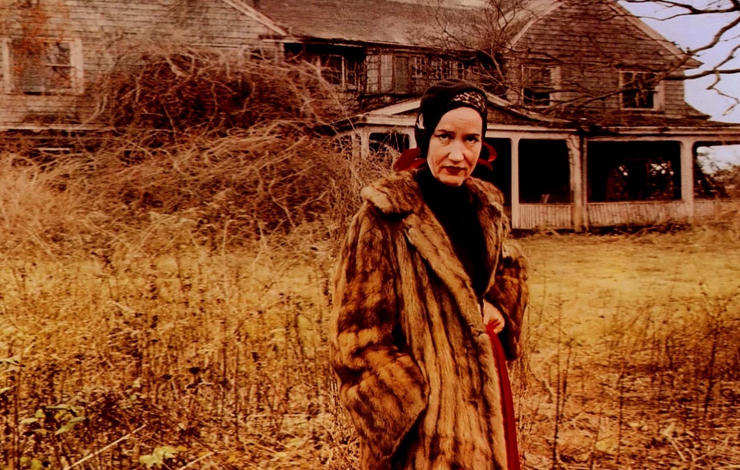
Grey Gardens is that rare documentary that has spawned its own industry of artistic renderings. Over three decades since the debut of the Maysles Brothers masterpiece (Ellen Hovde and Muffie Meyer also directed and edited, and Susan Froemke is credited as a producer and editor), the film has achieved the kind of cult status reserved for Harold and Maude and The Rocky Horror Picture Show. The phenomenon came to a head in 2006, when Grey Gardens premiered Off-Broadway as a musical, before its Tony Award-winning run on Broadway (Read Tamara Krinsky's article from the May 2006 Documentary here.). Albert Maysles himself released The Beales of Grey Gardens in 2006, culled from outtakes from the original, and now comes the HBO feature that debuted Saturday and runs throughout the month. A number of critics and bloggers have weighed in, including Alessandra Stanley of The New York Times; David Hudson of The IFC Blog; Eugene Hernandez of indieWIRE; and, from across the pond, John Patterson of The Guardian.
The story of the Beales—Edie and her daughter, "Little Edie," sequestered or trapped in their decaying, dilapidated Grey Gardens mansion, fiercely dependent on one another for comfort, entertainment, love and survival—struck me, when I first saw it, as a long-lost play that Samuel Beckett might have set aside and forgotten about, or perhaps as the film that Beckett wished he had made. Beckettian tropes abound in Grey Gardens. The ever-widening hole in the wall as a visual counterpoint to the ever-sedentary Edie recalls Winnie sinking in the sand as she chatters away to an unresponsive husband in Happy Days. Of course, Little Edie is anything but unresponsive; she chatters away too—to her mother, to the camera, to herself—and I also thought of Footfalls, Beckett's meditation on a mother-daughter relationship, staged on a tightrope. Grey Gardens itself, in all its squalid glory, could well serve as a stage setting for Endgame, about two characters who live in isolation, are mutually dependent and cannot seem to leave. The Beales' propensity to bring out the old scrapbooks and newspapers and sing the songs from their salad days of haute culture and high society reminded me of Krapp's Last Tape, in which the protagonist sits at a desk rewinding and replaying a tape recording of him reminiscing about his life. And Beckett's most celebrated play, Waiting for Godot, is there in Grey Gardens too, for, like Vladimir and Estragon, Edie and Little Edie Beale entertain each othe—and keep each other alive—in a happy/sad, farcical/vaudevillian continuum, in which they spend each day in reenactment. "It's very difficult to keep the line between the past and the present," confessess Little Edie in the HBO film.
I don't know if Samuel Beckett ever saw the original Grey Gardens, and if he did, I wonder if he smiled—not necessarily in recognition of the conceits that he had conjured up in his own work, but with the fact that Life Itself, that messy, tragicomic concatenation of strange effluvia, would make a richer work of art, when captured in the loving lenses of the Maysles Brothers.
I had a phone conversation with Albert Maysles about Salesman a few years ago, and I noted how much his film had reminded me of what Arthur Miller had sought to achieve in Death of a Salesman. Maysles proceeded to read me a quote from Miller himself, praising Salesman: "Salesman is an adventure into the American dream where hope is a sale and a sale is a confirmation of existence itself. It seems to me to penetrate deeply the men who make the wheels go round in a form of cinema that has never been used in quite this way."
We see beauty and poetry and tragedy and comedy every day—sometimes all at once—but it takes the artistry, craft, patience and passion of filmmakers like the Maysles Brothers to capture it all in one work of art—and inspire other artists to follow their example.